
DNA (Deoxyribonucleic Acid):
- A spiralling chain-like molecule that contains genetic code unique to every individual
- made up of 4 different types of nucleotides (A - Adenie, T - Thymine, G - Guanine, C - Cytosine)
Gene:
- a long stretch of DNA
- specific sequence of As, Ts, Gs, Cs that code for a protein or a group of proteins

Chromosomes = threadlike structures made of protein and a long molecule of DNA (DNA chain wrapped around protein)
Chromosomes are in the nucleus of a cell.
Chromosomes are only packed tightly when a cell is reproducing. Inside the cell, chromosomes exist in a loose, noodle-like structure.
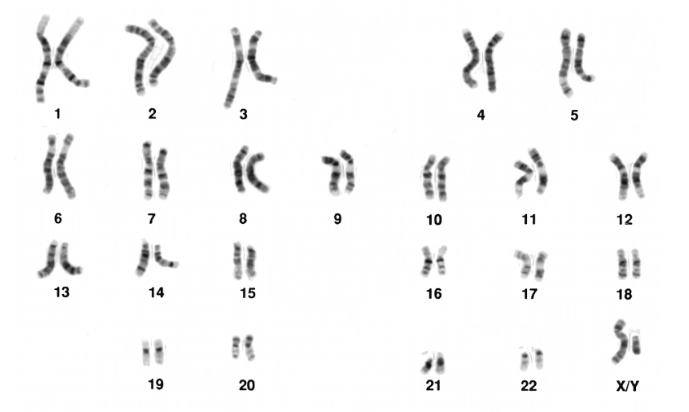
Two types of cell reproduction:
- meiosis (sex cell)
- mitosis (normal new cell)
Every human has 46 chromosomes (23 pairs) – 23 from father and 23 from mother.
Karyotype = an individual’s complete set of chromosomes
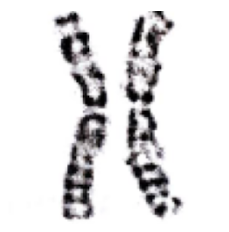
- one from mother, one from father
- stronger gene show characteristics
Sex chromosomes:
XX – female
XY – male
Mother can only give X.
Father can give either X or Y.
So, the gender of the child depends on chromosomes from dad.
Key = a set of questions about an organism you want to identify
The answer of each question takes you to another question in key. You have to work through all the questions till you reach the name of the organism.
How to use key:
1. Choose one organism.
2. Start at the top of the key and answer the first question.
3. Follow the line to the next question and keep going till you reach the name of the organism.
(1)
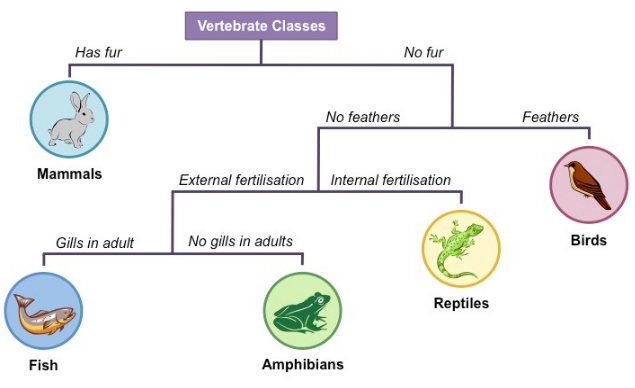
(2)

Constructing keys
- Think of a way to split the organisms into 2 main groups.
- Take one of those groups. Think of another way to split them into two.
- Go on like that.

* All animals have their scientific name *
Specie = a group of organisms that share same features and can breed together to produce fertile offspring
Same species breed → offspring (fertile - can reproduce)
Different species breed → infertile (infertile - cannot reproduce)
Members of the same species share the same features, but no individuals are exactly alike.
Variations = the differences between the individuals within a species
* All domestic dogs belong to the same species – their offspring are fertile *
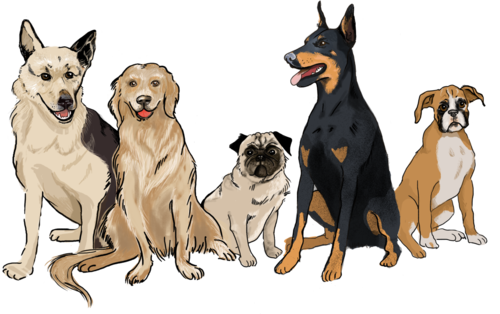
Reasons of variations:
- Genes
- Environment
- because you have different genes
- your genes may determine many different things about you
- anything around you affects you and the kind of lifestyle you live
Inheritance = the passing of features from parents to their offspring
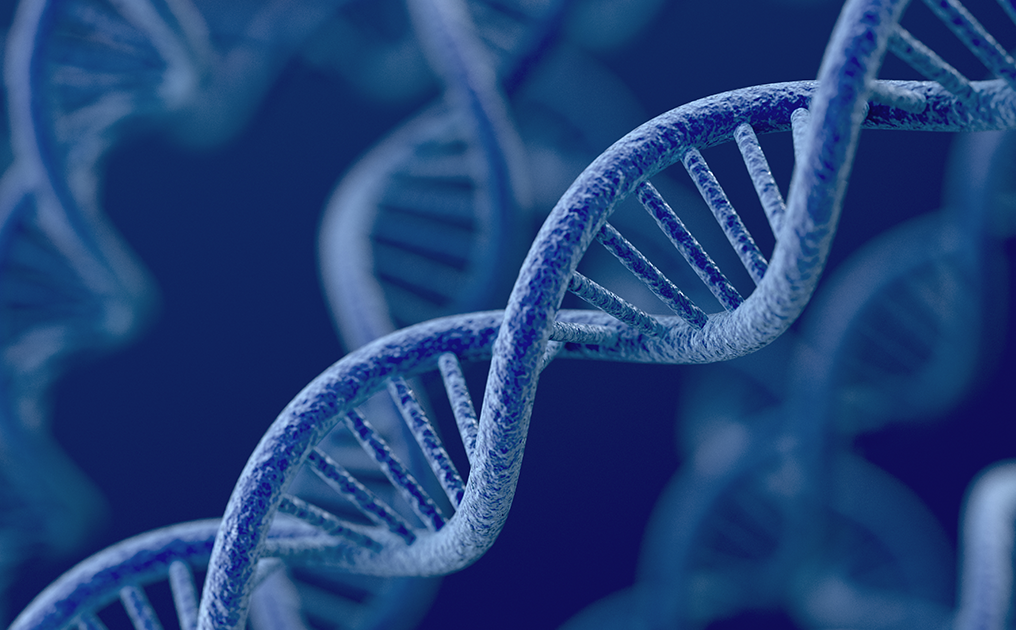
Genes:
- determine the characteristics of the animal
- provides a set of instructions for building an animal that belongs to a particular species
- animal that belongs to one species always gives birth to young that belong to the same species as genes are passed onto offspring from parents
Genetic mutation = a change to a gene’s DNA to produce something
→ can cause genetic disorders or hereditary diseases

- Your environment also has a big effect on you.
Eg. A child might have genes to grow tall but if he doesn’t eat enough, he may be short.
Some of your characteristics are to do with your behaviour, not what you look like.
Eg. Which language a child speaks depends on which family she was brought up in.
- Each gene is a set of instructions for the cell
- Tells the cells how to make a particular substance
- All cells in the body have the same genes so they have the same sets of instructions
- Most genes have 2 or more different forms
Eg. Gene for making hair pigment → has many different forms (forms that produce blonde hair, black hair, red hair, and etc.)
- Your cells divide to make more cells as you grow
- Each time cells divide, a complete set of chromosomes and genes is passed onto the new cells
- Your life began as a zygote
- Zygote is made when the nucleus of father’s sperm cell(contains chromosomes and genes from father) and mother’s egg cell(contains chromosomes from mother) fused together
* Exactly half of your chromosomes and genes come from your parents *
- Genes that come from father and mother can mix up in any combination.
Selective breeding = the process where human choose parents with particular characteristics to breed together and produce offspring with more desirable characteristics
Humans have selectively bred plants and animals for thousands of years.

- Water buffalos were wild animals (large and aggressive)
- People began domesticating them about 5000 years ago.
(domesticating = taming an animal so that you can use it)
- People chose to breed together buffalos that weren’t too big that were calm
- Continued doing this generation after generation
- Over time, water buffalo becomes smaller and more docile
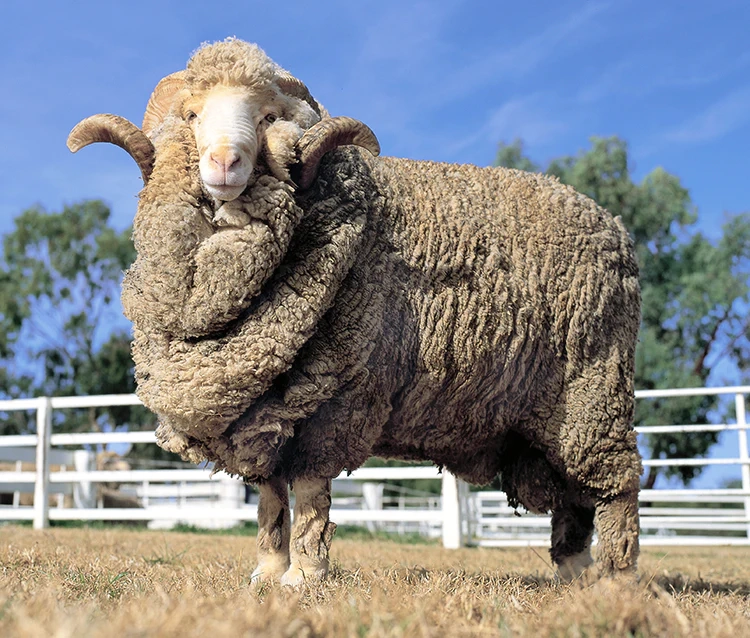
To improve the length of wool sheep produce,
- Choose male sheep (ram) and female sheep (ewe) that have longest wool
- Breed them together
- Choose the ones with the longest wool from their offspring and breed them together
- Keep doing this for many generations
- Eventually, you will end up with a flock of sheep with longer wool than you began with after many years

Ancient wheat → thin, small grains
Modern wheat → big, fat grains
How they produce better varieties of wheat:
- Choose wheat plants with the best grains
- Rub pollen from flowers of one plant onto the sigma of another
- Their offspring wheat plants will have better grains (over time, you will get better wheat)
* keep the plants in the lab while doing this because if the plants are kept outside, the wind might blow other plants’ pollen to the chosen one *
Natural selection = the process where individuals with variations that best adapt them to their environment survive and reproduce (no human involvement)

- Long ago, there were giraffe with long necks and short necks
- When food supply was short and all lower leaves had been eaten, only long-necked giraffes could get food
- Most short-necked giraffes died, only long ones survived and reproduced
| Selective breeding | Natural selection |
|---|---|
| There’s a population of organisms with variations (partly caused by genes) | There’s a population of organisms with variations (partly caused by genes) |
| People choose individuals with characteristics they want | Individuals with characteristics that produce best adaptations are more likely to survive |
| Only individuals people had chosen are allowed are breed | Only individuals with best adaptations survive to breed |
| Those individuals pass on their genes and characteristics to their offspring | Those individuals pass on their genes and characteristics to their offspring |
| - Variations people like - predictable |
- Adaptations - random |
* Almost all peppered moths found today are pale *
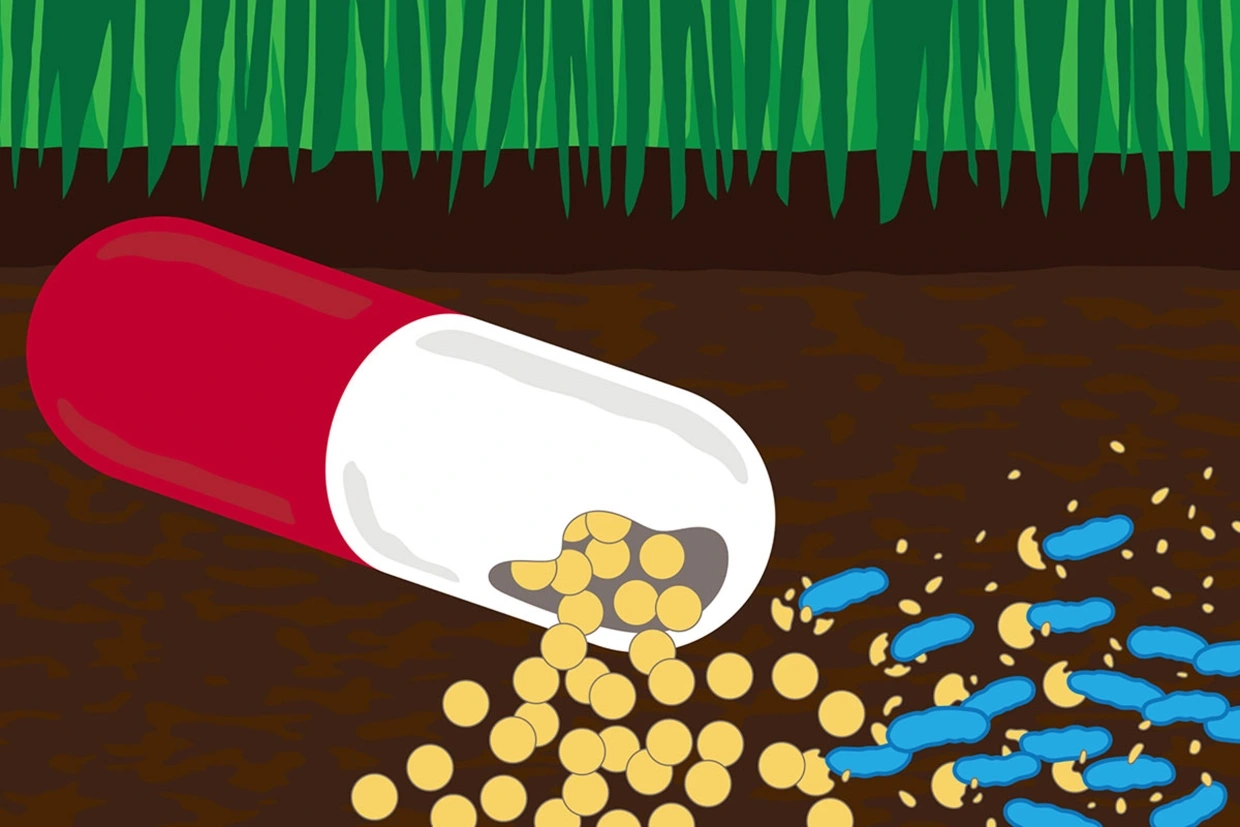
Antibiotics = drugs taken to kill bacteria that cause disease in bodies
Many antibiotics don’t work anymore as bacteria have become resistant to them. But how?
- Not every bacteria is alike, some may have gene that make it resistant to antibiotic
- When antibiotic is added, most bacteria are killed but not the resistant ones
- The resistant one multiplies and produces a population of resistant bacteria just like itself.
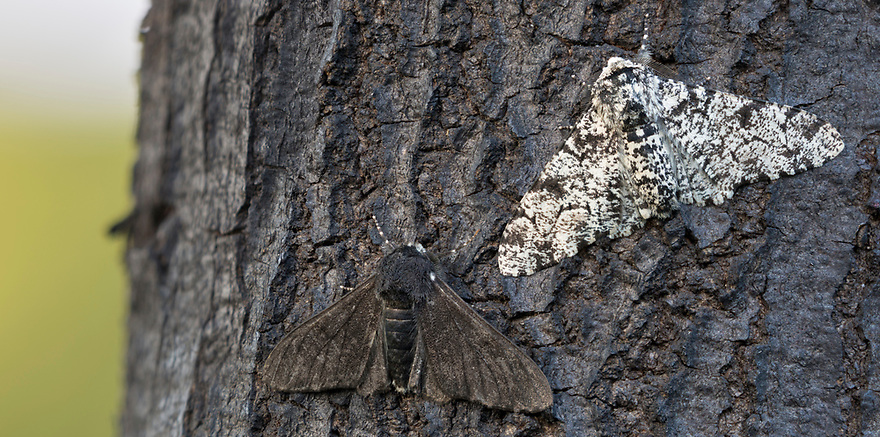
- Peppered moths live in England
- Most have pale wings, some has dark wings
| Pale wings | Dark wings |
|---|---|
| - Camouflage perfectly on tree trunks with lichens on them
- So, almost all are pale ones |
More visible on tree trunks with lichens and most are eaten
- Only a few remains |
| → Around 1850, industry was developing rapidly and many
factories burnt coal
→ smoke from factories pollute air and killed lichens → most tree trunks become dark without lichens |
|
| - Becomes more easily spotted and got eaten
- Population decreases |
- Camouflage with the dark trees’ trunk
- Population grows |
| → Today, factories aren’t allowed to pollute air
→ pollution decreased → tree trunks are covered with pale-coloured lichens again |
|
| - Population increase again | - Population decrease |
| 1809 | - Charles Dawin was born in England |
| 1830 | - Charles Lyell published a book ‘Principles of Geology’
- suggest that mountains and valleys haven’t always been there and will change in the future - fossil founds were remains of different organisms from million of years ago |
| 1831 | - Charles Darwin began a 5 year voyage as a naturalist
- took Lyell’s book with him - began to think species could change too - When he arrived home, he developed an idea that all different species developed from one original specie |
| 1855 | - rwin took up pigeon breeding
- had idea that all pigeons developed from a wild pigeon specie, the rock dove |
| 1859 | - Thomas Malthus published a book
- suggested that population on earth couldn’t grow on forever (will run out of food) - helped Darwin see steps that could lead to evolution of new species - Darwin published “The Origin of Species” (his famous book) |
Main points of his Theory from “The Origin of Species”
- Organisms in a species show variations
- Many organisms won’t survive till adulthood
- Individuals that can best adapt have the the best chance of surviving, breeding and having offspring
- Offsprings inherit some features from parents
- Continues generation over generation, a change in species happen over time and develop into a different species
Darwin called his theory “Natural Selection”.